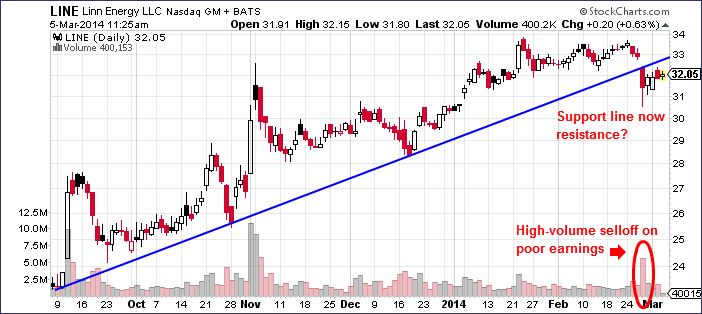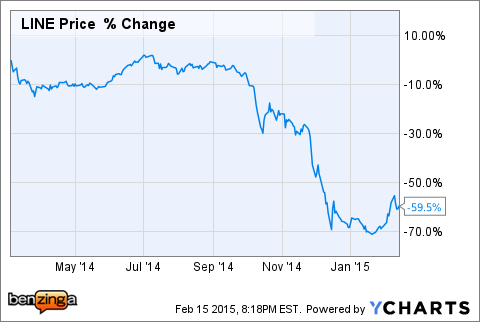This past week was a pretty good week for me overall. Melco Crown Entertainment Limited (NASDAQ: MPEL), my second largest holding, was up more than nine percent on the week on the “strength” of their Q4 earnings miss. While counter-intuitive moves such as this can be frustrating at times, it’s important to understand that stocks don’t move randomly. Just because we can’t always understand or predict why they move the way they do, stocks do not have a mind of their own. Melco was up this week because, despite the disappointing earnings, investors bought shares of the stock. Period.
Why people were buying is the million-dollar question, and as frustrating as it can be, there’s usually no way to definitely peg down a single reason. When I bought call options in Melco back in December, the biggest reason I had for buying the options at the time is that I believed all of the bad news for Macau had already been priced into the stock. So what if earnings were bad? Everybody knew earnings would be bad. Las Vegas Sands (NYSE: LVS), MGM Resorts International (NYSE: MGM), and Wynn Resorts Ltd (NADAQ: WYNN) all reported bad year-over-year Macau numbers. Macau revenue has been falling for 8 months. Anyone that cares about Macau’s Q4 revenue numbers already sold the stock a long time ago.
However, anyone that has been waiting and watching for a time to buy the stock was probably hoping that the share price would fall after earnings and give them an even better price. When it didn’t fall, they went ahead and bought because there’s not too many potential negative catalysts coming up for the stock. And of course, that likely triggered short covering and technical buying after the stock broke above resistance levels.
It feels good to be right, but emotion in the market can be very dangerous. I wrote an article a while back about an analyst that was bearish on World Wrestling Entertainment Inc (NYSE: WWE) for four reasons. I agreed with a lot of what the analyst had to say, particularly his feelings that the driving force behind the WWE Network reaching 1 million subscribers was that WWE gave away the entire month of November for free.
When I saw that WWE stock jumped more than 20 percent on the news of 1 million network subscribers, I essentially believed the opposite of what I believed about Melco: all the good news for WWE had been priced into the stock already. It had nowhere to go but down following earnings. It certainly didn’t help the stock’s prospects that the company’s earnings have been tanking for the past five years.
So I did something this past week that I rarely do: I made a relatively small speculative bet that WWE stock would fall following the company’s earnings report. I always regretted not profiting off of the call I made that WWE was overpriced at around $30 back in March of 2014. Of course, the stock fell more than 60 percent in the following months.
So last week, I shorted WWE stock the day before earnings and planned to cover my short the following day, win or lose.
As it turns out, I lost… to the tune of about 7.5 percent. WWE reported a loss of only $1.9 million for the quarter. That’s not really “good” news, but it was a lot less bad than many investors anticipated.
With the stock up more than 7 percent the next day, it was tempting to gamble that there would be a bit of a sell-off on Friday. However, anyone that has read my book knows that if I don’t have a good reason to deviate from my plan, I don’t do it. You don’t win ‘em all, and the worst thing you can do is make things worse by being stubborn.
I believed that a short on WWE offered a compelling risk/reward balance prior to earnings, but there is always risk to every trade. Gauging the risk and deciding on a plan, including how large of a position to take, are very important parts of being a successful trader. Yeah, I lost 7 percent on my small WWE short, but the position was small and a 7 percent loss is manageable regardless.
What would have been much less manageable would have been stubbornly gambling that I could cover my short at a lower price on Friday. I was wrong, and I took my lumps and my manageable loss just as I planned to do. If I had held my short position for another day, I quickly would have turned a 7.5 percent loss into a 15.5 percent loss, as the stock spiked again on Friday.
I’ve written before about the importance of cutting losses when your trading plans don’t work out. Back in March of 2014, I sold Linn Energy LLC (NASDAQ: LINE) at around $32 to take a 3 percent loss because I didn’t like what I saw in this chart:
Here’s what has happened since:
I’ll take a 3 percent loss over a 60 percent loss any day.
Sometimes it’s hard to admit when you’re wrong, but pride has no place in investing. Those of you that have read my book know that I sold the first stock I ever bought for a big loss. Five years later, my portfolio was up more than 400 percent.
Making money the smart way is a marathon, not a sprint. Making mistakes is part of the game. Any trader that tells you that every trade he or she makes is a winner is a liar, I promise. Success in the long-term is not about being perfect; it’s how you handle your mistakes.
Finally, last week I promised word of a possible upcoming trade that I may make soon. I’m still shopping around, but I’m looking to speculate on one of the beaten down oil and gas exploration companies. If/when I decide to actually pull the trigger on a buy, you’ll read about it here first on Trading Common Sense.
Want to learn more about the stock market? Or maybe you just want to be able to look sophisticated in front of your coworkers when they ask you what you are reading on your Kindle, and you’d prefer to tell them “Oh, I’m just reading a book about stock market analysis,” rather than the usual “Oh, I’m just looking at pics of my ex-girlfriend on Facebook.” For these reasons and more, check out my book, Beating Wall Street with Common Sense. I don’t have a degree in finance; I have a degree in neuroscience. You don’t have to predict what stocks will do if you can predict what traders will do and be one step ahead of them. I made a 400% return in the stock market over five years using only basic principles of psychology and common sense. Beating Wall Street with Common Sense is now available on Amazon, and tradingcommonsense.com is always available on your local internet!




